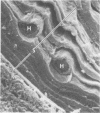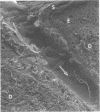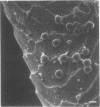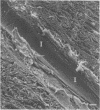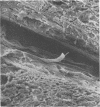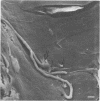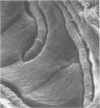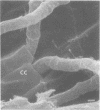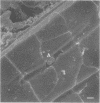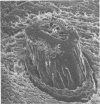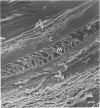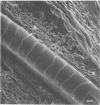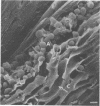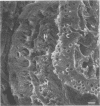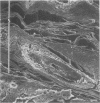Abstract
Trichophyton mentagrophytes invasion of guinea pig skin was examined by scanning electron microscopy. Biopsies were obtained daily for 12 days from experimental infection sites. Dermatophyte invasion, examined in detail by scanning electron microscopy of cross-sectioned, prefixed skin was evidenced by: the appearance of hyphae within the stratum corneum; follicular invasion by hyphae, which remained initially within the follicle wall; emergence of the hyphae from the wall into the follicular canal; proliferation of the fungus down the follicle, with furrowing of the follicle wall and hair shaft cuticle; penetration of hyphae into the hair shaft by subcuticular and transcuticular routes; and massive peripilar hyphal proliferation with arthrosporogenesis. A three-dimensional perception of the invasion sequence of a dermatophyte in guinea pig skin was obtained by scanning electron microscopy.
Full text
PDF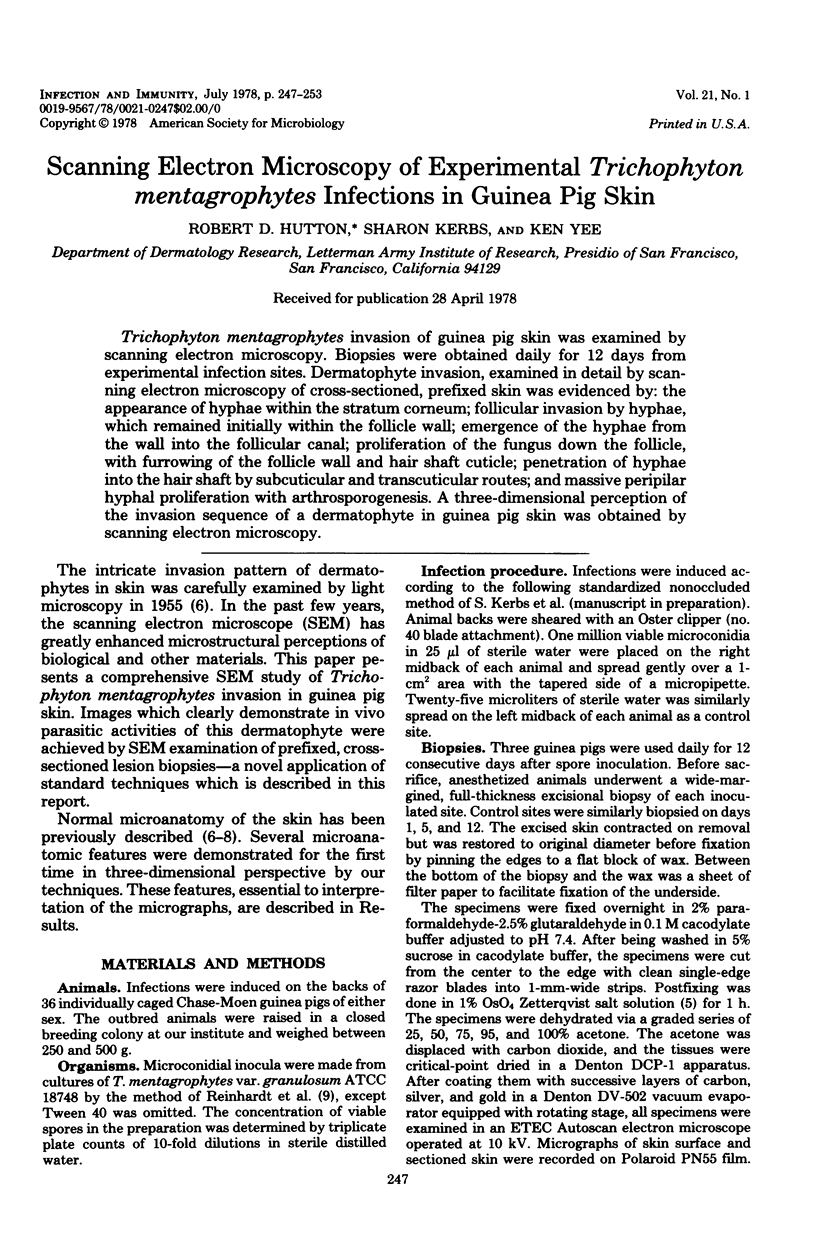
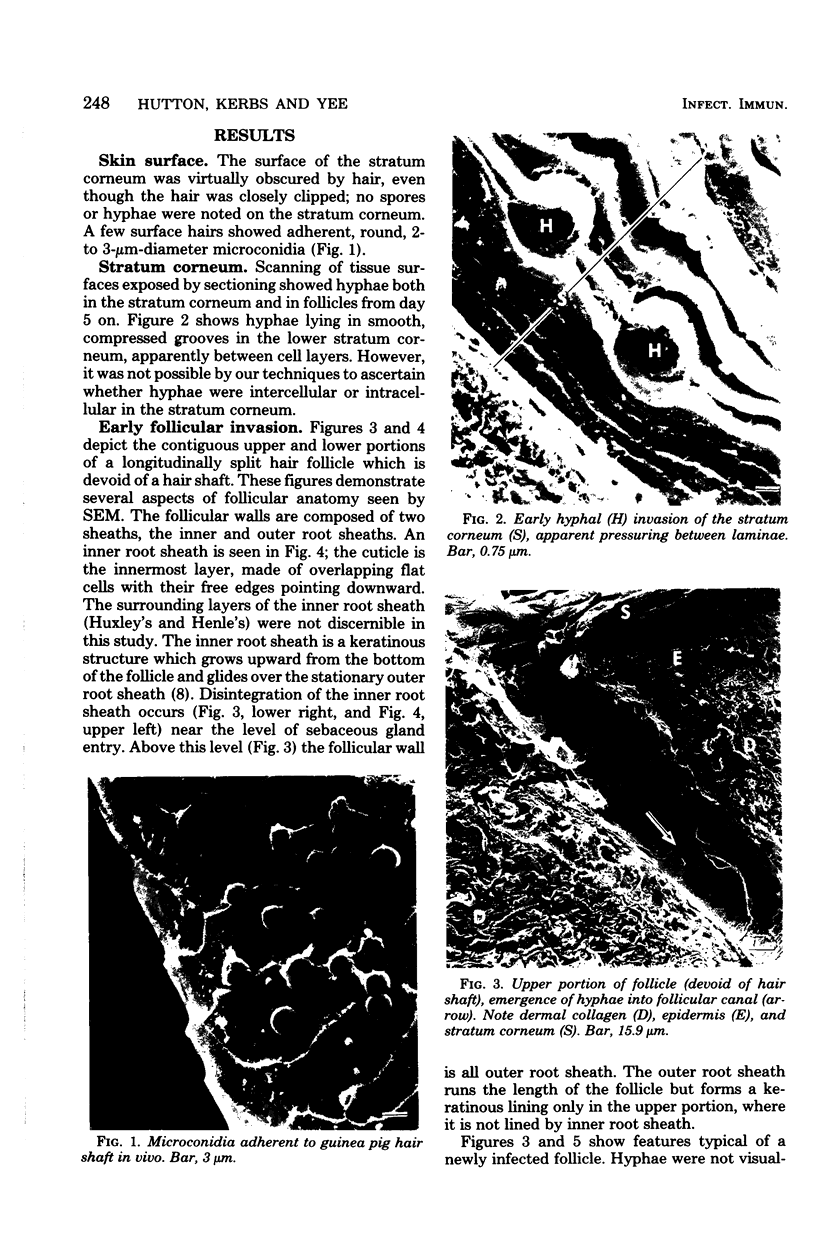
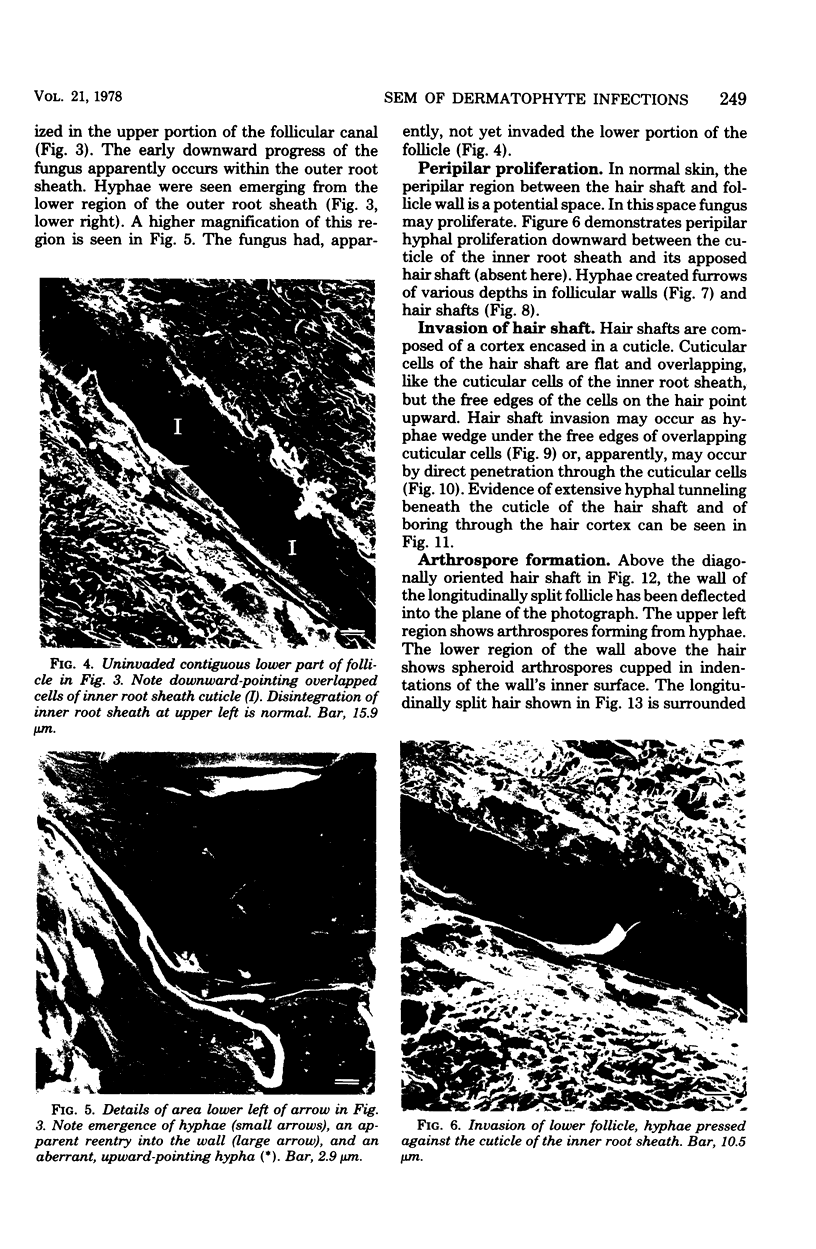
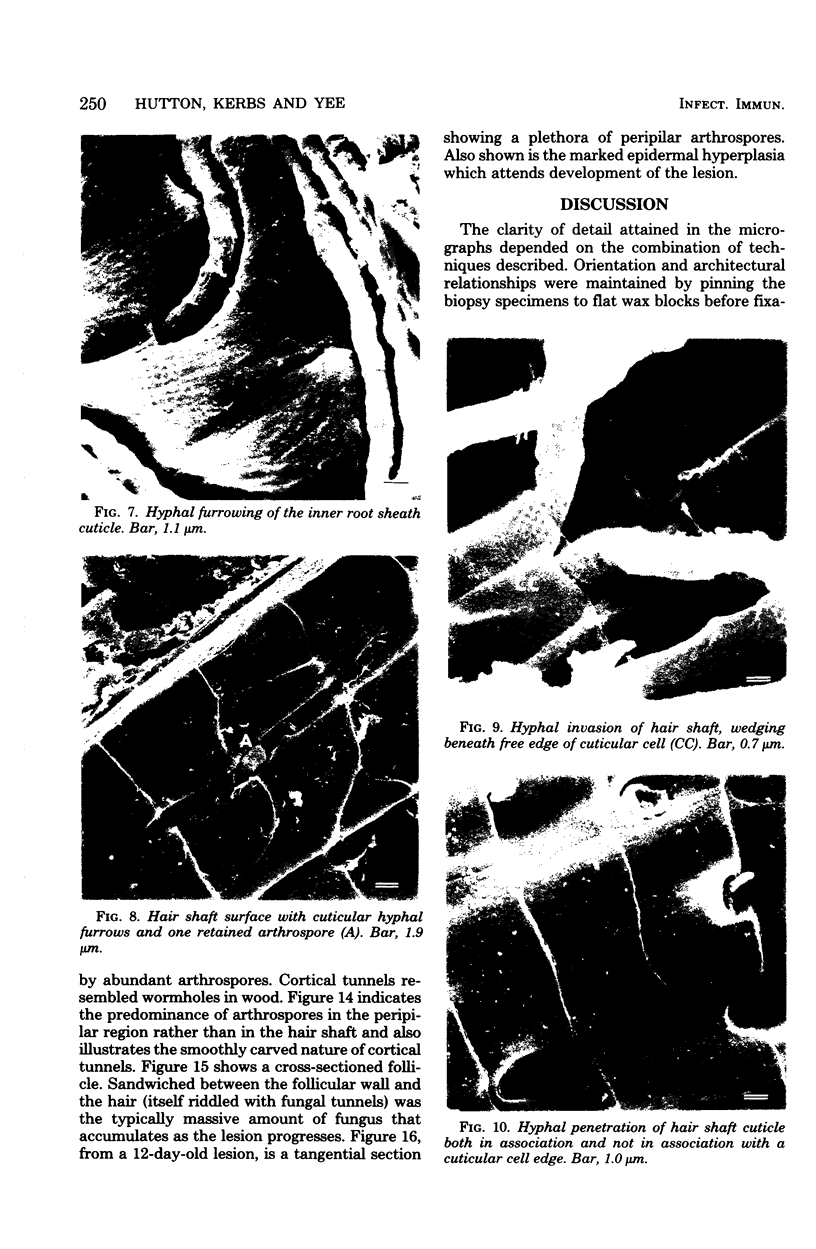
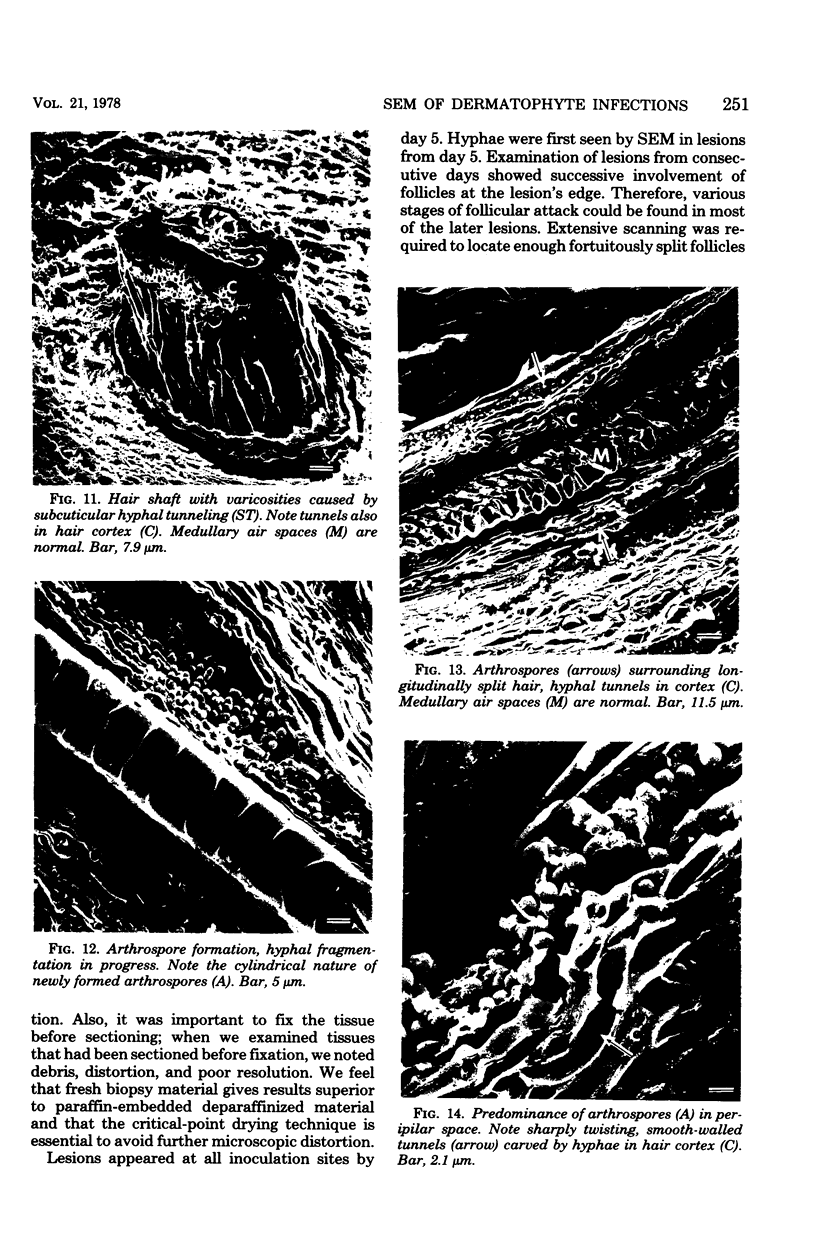
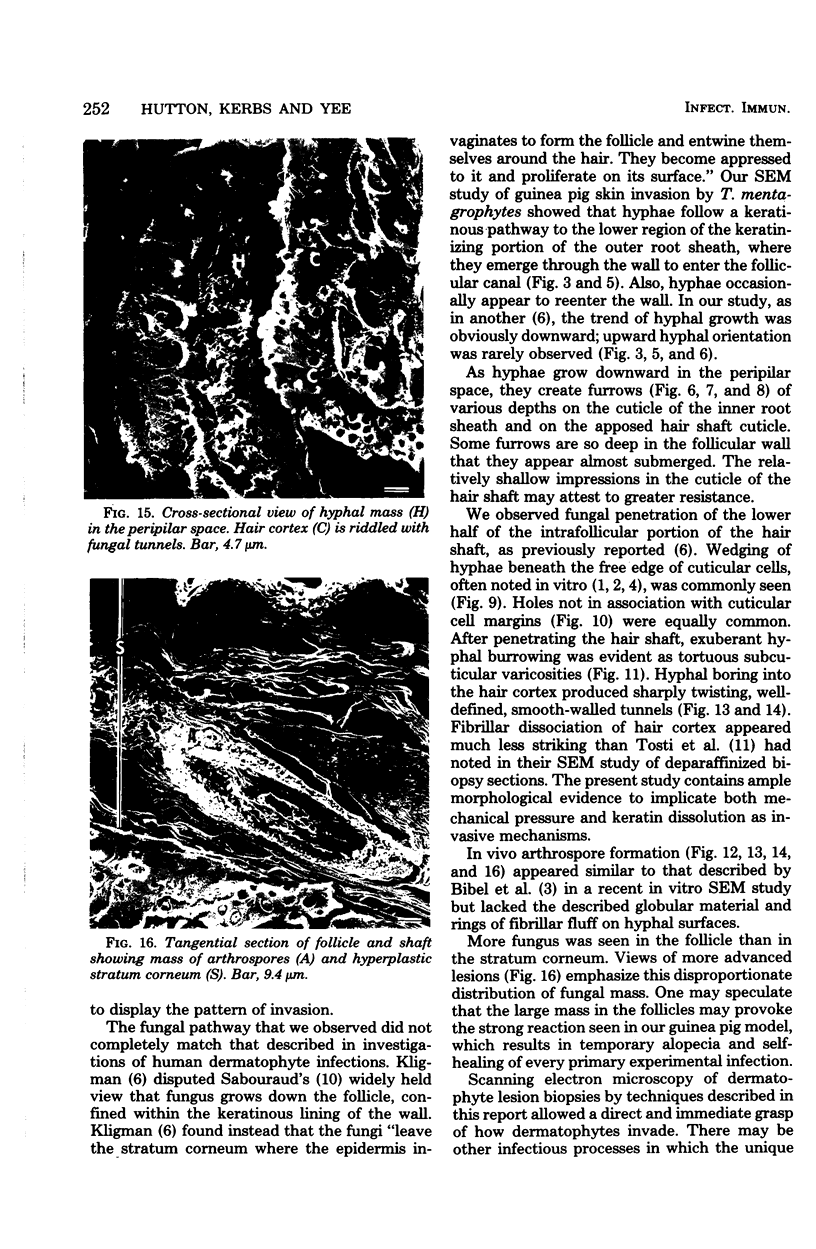
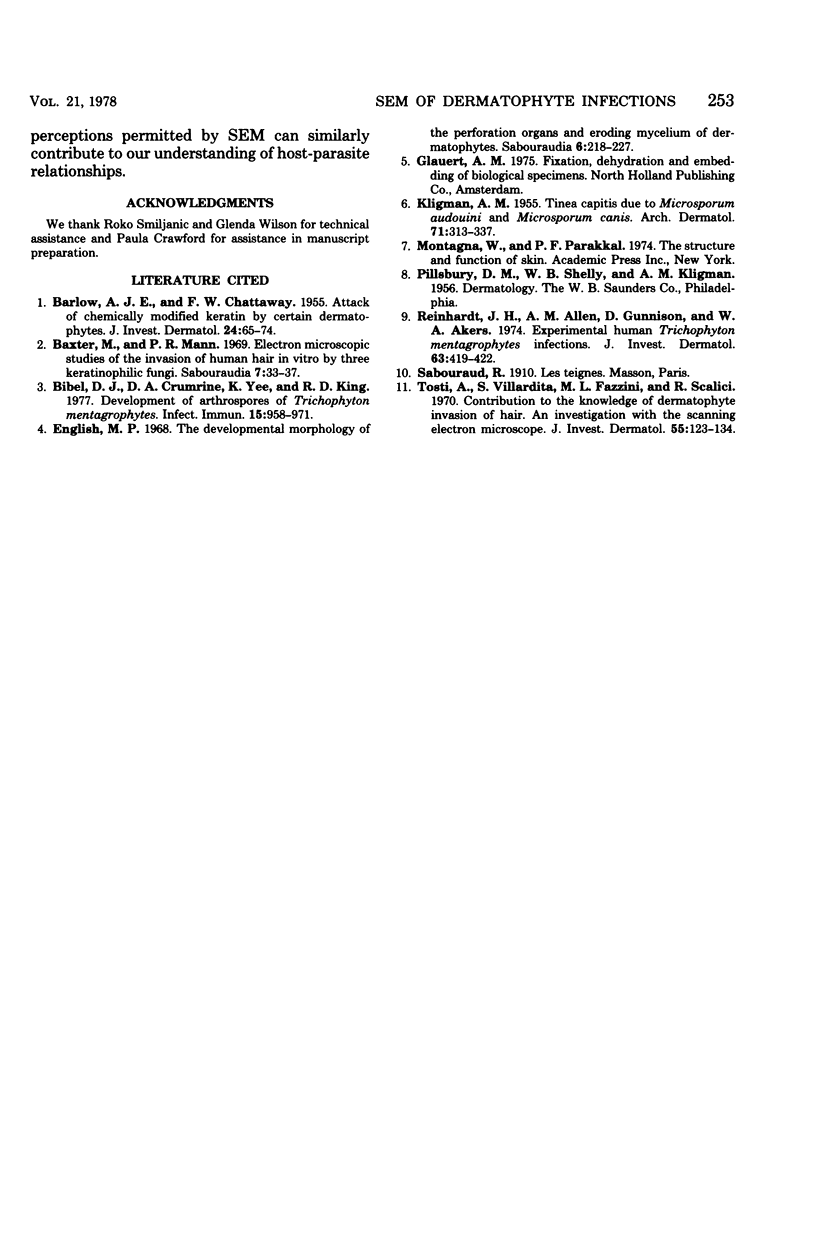
Images in this article
Selected References
These references are in PubMed. This may not be the complete list of references from this article.
- BARLOW A. J., CHATTAWAY F. W. The attack of chemically modified keratin by certain dermatophytes. J Invest Dermatol. 1955 Jan;24(1):65–74. doi: 10.1038/jid.1955.9. [DOI] [PubMed] [Google Scholar]
- Baxter M., Mann P. R. Electron microscopic studies of the invasion of human hair in vitro by three keratinophilic fungi. Sabouraudia. 1969 Feb;7(1):33–37. [PubMed] [Google Scholar]
- Bibel D. J., Crumrine D. A., Yee K., King R. D. Development of arthrospores of Trichophyton mentagrophytes. Infect Immun. 1977 Mar;15(3):958–971. doi: 10.1128/iai.15.3.958-971.1977. [DOI] [PMC free article] [PubMed] [Google Scholar]
- English M. P. The developmental morphology of the perforating organs and eroding mycelium of dermatophytes. Sabouraudia. 1968 Jun;6(3):218–227. doi: 10.1080/00362176885190421. [DOI] [PubMed] [Google Scholar]
- KLIGMAN A. M. Tinea capitis due to M. audouini and M. canis. II. Dynamics of the host-parasite relationship. AMA Arch Derm. 1955 Mar;71(3):313–337. doi: 10.1001/archderm.1955.01540270025004. [DOI] [PubMed] [Google Scholar]
- Reinhardt J. H., Allen A. M., Gunnison D., Akers W. A. Experimental human Trichophyton mentagrophytes infections. J Invest Dermatol. 1974 Nov;63(5):419–422. doi: 10.1111/1523-1747.ep12676579. [DOI] [PubMed] [Google Scholar]
- Tosti A., Villardita S., Fazzini M. L., Scalici R. Contribution to the knowledge of dermatophytic invasion of hair. An investigation with the scanning electron microscope. J Invest Dermatol. 1970 Aug;55(2):123–134. doi: 10.1111/1523-1747.ep12291637. [DOI] [PubMed] [Google Scholar]



